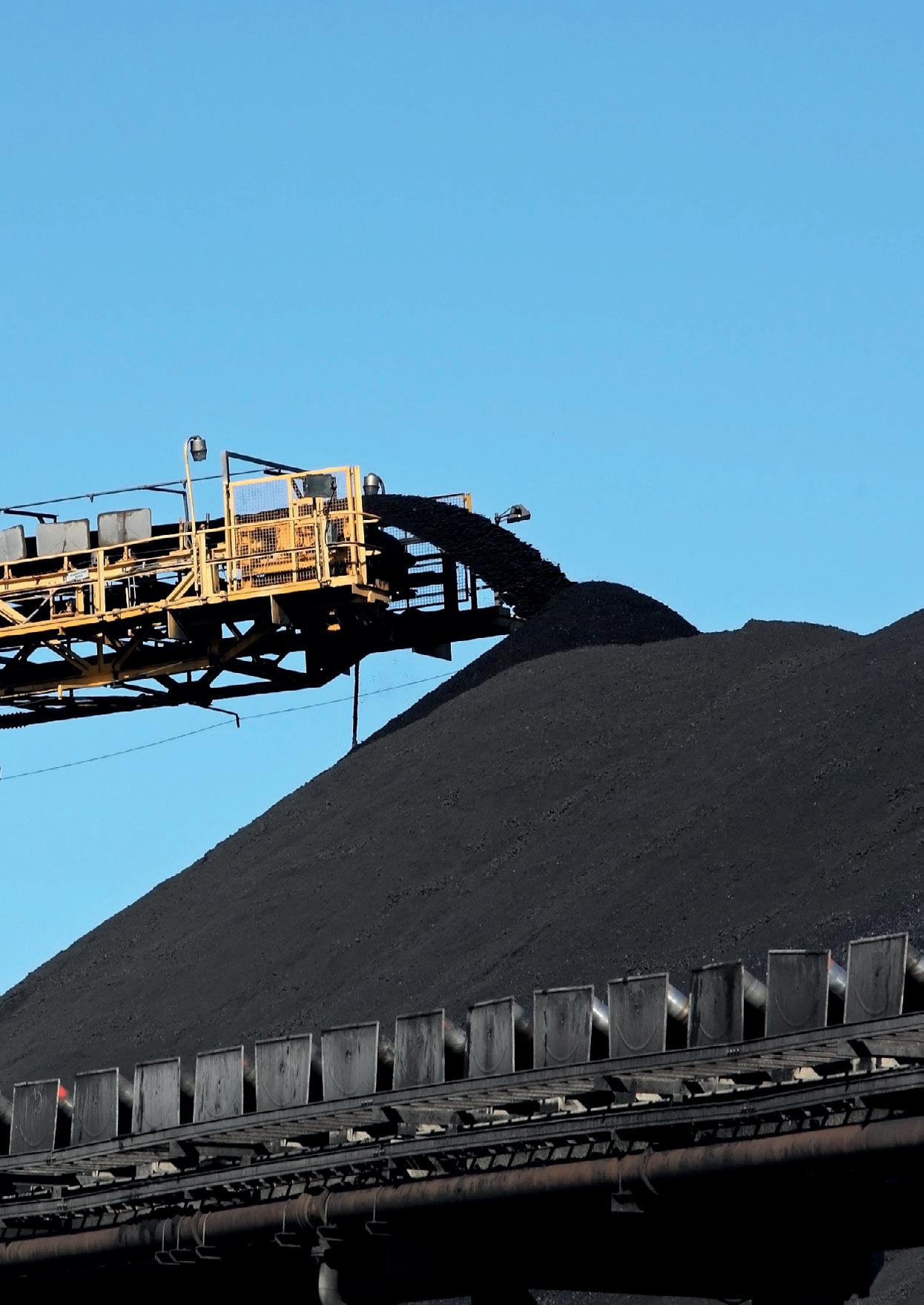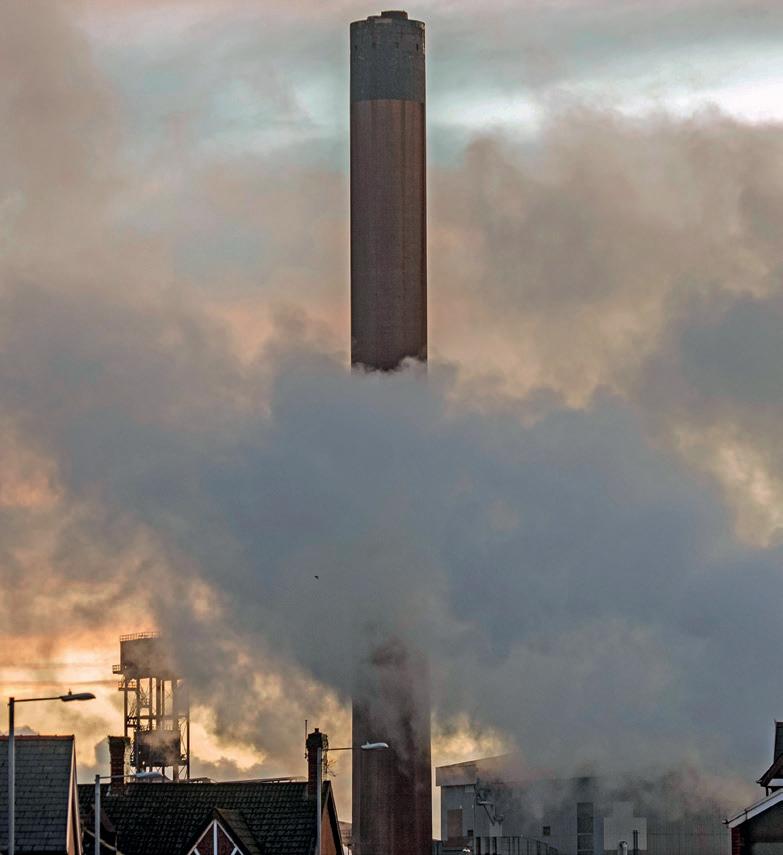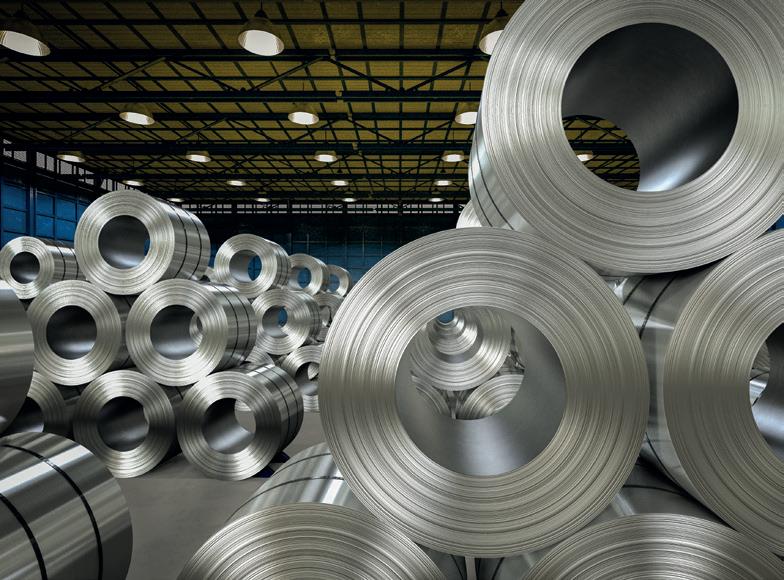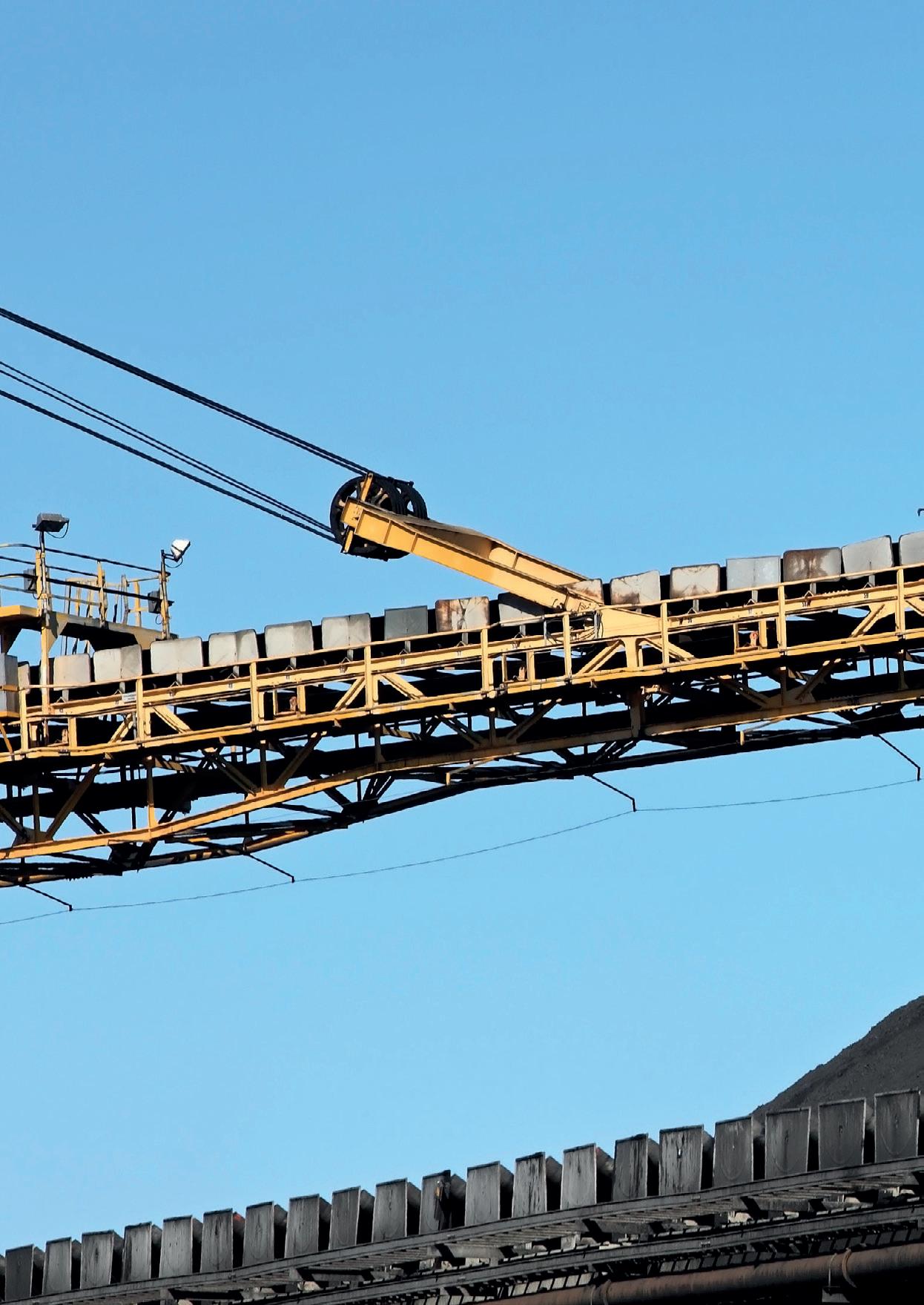The case against new coal mines in the UK

The case against new coal mines in the UK
By Rebecca Willis, Mike Berners-Lee, Rosie Watson and Mike Elm
Acknowledgements
With thanks to Henry Adams, Maggie Mason, Dustin Benton and Karen Crane.
Green Alliance
Green Alliance is an independent think tank and charity focused on ambitious leadership for the environment. Since 1979, we have been working with the most influential leaders in business, NGOs and politics to accelerate political action and create transformative policy for a green and prosperous UK.
Green Alliance
11 Belgrave Road London SW1V 1RB
020 7233 7433
ga@green-alliance.org.uk
www.green-alliance.org.uk
blog: www.greenallianceblog.org.uk
twitter: @GreenAllianceUK

The Green Alliance Trust
Registered charity no 1045395 Company limited by guarantee (England and Wales) no 3037633
Published by Green Alliance

January 2020
ISBN: 978-1-912393-43-5
Designed by Howdy
© Green Alliance, January 2020
Green Alliance’s work is licensed under a Creative Commons AttributionNoncommercial-No derivative works 3.0 unported licence. This does not replace copyright but gives certain rights without having to ask Green Alliance for permission. Under this licence, our work may be shared freely. This provides the freedom to copy, distribute and transmit this work on to others, provided Green Alliance is credited as the author and text is unaltered. This work must not be resold or used for commercial purposes. These conditions can be waived under certain circumstances with the written permission of Green Alliance. For more information about this licence go to http://creativecommons.org/licenses/ by-nc-nd/3.0/
Please note: our Creative Commons licence does not cover the use of any photographic images featured in this report which are subject to separate copyright and must not be shared or copied without permission.
B
This insight summarises evidence on coal mining, the use of coal in steel manufacture and the carbon emissions arising from the steel industry.
We focus on the UK, and the proposed development of a new mine at Woodhouse Colliery, Cumbria. We set the proposals for the mine in the context of UK and global legislation on climate mitigation, and future plans for reducing coal use in steel production, through reuse, recycling, more efficient production methods, and new technologies to produce steel without coal.
We conclude that decarbonisation of the steel industry, and a phase out of coal use, is both necessary and possible, making the new coal mine in Cumbria unnecessary. In fact, the new mine would hinder the development of low carbon alternatives to conventional steel production.
We argue for a more active industrial strategy to encourage low carbon jobs and investment in former mining and industrial areas. Finally, we make recommendations for the government to remove ambiguities surrounding its approach to fossil fuel extraction, and to stimulate investment in alternative sources of power.
1
Summary
New coal mining in the UK
There are currently a number of proposals for new coal mines in the UK, for example, Highthorn Mine in Druridge Bay, Northumberland and West Cumbria Mining’s proposal for the new Woodhouse Colliery, near Whitehaven in Cumbria. The developers of Highthorn mine, which is currently subject to legal proceedings, have asserted that coal from the mine will be needed for electricity generation. West Cumbria Mining states that coal from Woodhouse Colliery would be used by the steel industry, both in the UK and abroad.
Woodhouse Colliery, Cumbria
We focus here on the proposal for Woodhouse Colliery, analysing claims made by West Cumbria Mining and the planning authority, Cumbria County Council. This is the first coal mine to seek planning permission following the UK’s adoption of a target of net zero carbon emissions by 2050.
The mine would be partly on land and partly under the sea. Planning permission has been sought from Cumbria County Council for the land-based portion of the development. Permission was granted in March 2019, and the decision was ratified in October 2019. Shortly after, the secretary of state, Robert Jenrick, said that he would not intervene in the decision, despite having the power to do so. Planning permission for the section under the seabed is required from a separate authority, the Marine Management Organisation. This has not yet been submitted.
The planning application estimates that the mine would produce 2.43 million tonnes of metallurgical coal per annum, to be used in steel production, as well as 350,000 tonnes of ‘middlings coal’, which cannot be used for steel, and would either be sold for combustion or disposed of.1
Overall, UK domestic coal production in 2016 was four million tonnes, from 13 mines, employing a total of 629 people.2 The developers of the new mine say that the whole development (including the section under the seabed) would create 146 jobs during construction, and 518 jobs once the mine is open, with potential for additional local jobs in the supply chain.3
Both West Cumbria Mining and Cumbria County Council have said that steel consumption worldwide is forecast to rise; that “aside from electric arc furnaces you can’t make steel without coke [metallurgical coal]”; and that the coal would be used by UK and EU steelmakers to replace imported coal.
Cumbria County Council’s Planning Officer Report states that carbon emissions will be reduced by 5.3 million tonnes over its lifetime because, if the coal is used in UK steel production, this will reduce the transport emissions from imported coal.4 The report makes no estimate of emissions from the extraction and processing of the coal, although this is a material factor in planning decisions. It makes the assumption that the carbon savings from reduced coal transport will outweigh emissions from the mine itself. As they state in a subsequent report, “we consider that the greenhouse gas emissions of the mining operations would be broadly carbon neutral.”5
In terms of emissions from the combustion of the coal, the report says “there would be no increase in CO 2 as the opening of the mine would be offset by the very likely reduction in production elsewhere due to competition.”6 They describe this as “a carbon neutral situation.”7
2
“Coal from Woodhouse Colliery would be used by the steel industry, both in the UK and abroad.”
Will Woodhouse Colliery be ‘carbon neutral’?
In assessing the planning application, Cumbria County Council has twice stated that the proposed mine would be “carbon neutral”.
First, the council’s report claims that coal from the Cumbrian mine would substitute for coal produced elsewhere, leading to no net increase in coal production worldwide, which they describe as a “carbon neutral situation”. However, economic theory suggests that an increase in supply of a commodity, such as coal, would reduce the price, leading to increased demand and, therefore, increased emissions. In the case of the steelmaking industry, this would, in turn, decrease the incentive to use coal more efficiently, recycle more steel or produce steel using alternative processes, even though all these are technically possible.
Second, the report says that the coal produced would be used mostly in the UK and EU, substituting for imported coal, and, therefore, reducing emissions from the transportation of coal. This, it says, compensates for the emissions from the mining operations, and thus “the greenhouse gas emissions of the mining operations would be broadly carbon neutral.” However, no figures are provided to substantiate this claim.

The phrase ‘carbon neutral’ refers to a situation in which no additional greenhouse gas emissions are produced, because the those produced are ‘balanced’ by those removed from the atmosphere, for example through carbon capture and storage (CCS) or carbon storage through land management. This is not the case for Woodhouse Colliery.
If there were savings from reduced transportation of coal, these would not cancel out or neutralise the emissions from the mine operations. In the context of the UK’s target of net zero greenhouse gas emissions by 2050 and global efforts to keep carbon emissions in line with a scenario compatible with no more than a 1.5OC increase, absolute reductions of emissions are required, rather than balancing off one set of emissions against another.
3
“In the context of the UK’s target of net zero greenhouse gas emissions by 2050 absolute reductions of emissions are required.”
UK legislation
The UK has a statutory (legally binding) target to reach net zero emissions by 2050, under the 2008 Climate Change Act, amended in 2019. Having ratified the Paris climate agreement of 2015, it has also agreed the goal to limit global average temperature rise to between 1.5°C and 2°C.
The UK has a clear policy on coal for electricity generation. It has pledged to phase out unabated coal-fired power generation by 2025, and it is a founding member of the international Powering Past Coal alliance.8 9 There is currently no phase-out date for the use of coal in steel manufacturing. But, in August 2019, the government announced a Clean Steel Fund of £250 million, which is designed, in its words, “to transition to lower carbon steel production through new technologies and processes, placing the sector on a pathway consistent with the UK Climate Change Act (net zero)”.10
In England, new developments, including mines, are controlled by planning legislation and must follow the National Planning Policy Framework (NPPF).11 The overall aim of the NPPF is to achieve sustainable development, which includes “mitigating and adapting to climate change, including moving to a low carbon economy.”12 The NPPF contains clear guidance on planning permission for the extraction of coal. It says:
“Planning permission should not be granted for the extraction of coal unless:
a) the proposal is environmentally acceptable, or can be made so by planning conditions or obligations; or
b) if it is not environmentally acceptable, then it provides national, local or community benefits which clearly outweigh its likely impacts (taking all relevant matters into account, including any residual environmental impacts).”13
The Climate Change Act 2008 also requires local authorities to take into account whether projects are likely to contribute to sustainable development, particularly where they are likely to increase carbon emissions.
Planning permission for coal mines can be granted by the local planning authority, following the national policy detailed above, unless the secretary of state decides that it is a matter of national importance. In which case, they can ‘call in’ the application to be determined by national government, rather than the local authority. Reasons to call in the development include a potential conflict with national policy or a risk of national controversy.
Legislation and targets in the EU and elsewhere
The EU is a signatory to the Paris climate agreement and, in December 2019, set a target of net zero emissions by 2050. The Paris agreement was ratified by all major economies, except the United States. All signatories are committed to develop national plans compatible with the Paris goal of net zero emissions by the middle of this century.
There have been many assessments of the climate implications of extracting fossil fuels, including coal, oil and gas. The United Nations Environment Programme’s 2019 report, The production gap , states that “governments are planning to produce about 50% more fossil fuels by 2030 than would be consistent with a 2°C pathway and 120% more than would be consistent with a 1.5°C pathway.”14
An assessment published in the journal Nature in 2015 reported that “globally, a third of oil reserves, half of gas reserves and over 80 per cent of current coal reserves should remain unused from 2010 to 2050 in order to meet the target of 2°C”.15 (Note that this relates to a 2°C target, not the stricter 1.5°C target subsequently agreed at Paris in 2015.) A report by the NGO Carbon Tracker estimates that 17 per cent of known fossil reserves could be burned to be consistent with the Paris climate agreement.
4
“There is currently no phase-out date for the use of coal in steel manufacturing.”
The UK government acknowledges that most existing reserves should not be burned. In 2016, the climate minister Nick Hurd stated that “between 70-75 per cent of known fossil fuels would have to be left unused in order to have a 50 per cent chance of limiting global temperature rise to below 2°C.”16
The scale of emissions from using coal
West Cumbria Mining plans to extract 2.43 million tonnes of coking coal per year and 0.35 million tonnes of middlings coal every year for 50 years. When used, this would emit around 420 million tonnes CO 2 e.17 This figure excludes emissions arising from the extraction process itself.

To put this in perspective, the UK’s entire annual emissions in 2018 were only slightly higher, at 450 million tonnes. And this figure will come down as the UK progresses toward its net zero target.
Annual emissions from use of the coal extracted, at 8.4 million tonnes per year, would be more than double the net annual emissions from the whole of Cumbria, which is currently 3.79 million tonnes per year.18
5
How to reduce the climate impact of steelmaking
Currently, 95 per cent of new steel is made in a blast furnace, using metallurgical coal.19 Two plants making virgin steel are operational in the UK, at Scunthorpe and Port Talbot, although the future of some plants is uncertain due to global over capacity in steel production.20
According to the industry body, The Energy Transformations Commission, “energy-related emissions from the steel and iron industry currently amount to circa 2.8 Gt of CO2 per annum accounting for almost 8% of total global energy system emissions”.21
To meet carbon targets and prevent dangerous warming, carbon emissions from steel production must be reduced. There are four broad strategies for this: first, use less steel; second, recycle more steel; third, improve the efficiency of steel production in a blast furnace; fourth, produce steel without coal. These are outlined below:
1.
Use less steel
Steel can be reused and remanufactured, resulting in far lower carbon emissions. For example, steel plates for shipbuilding can be re-rolled and used in new ships. A report by the World Steel Council describes the various possible processes.22 Many construction projects over use steel. Material Economics states that many construction projects use 30-50 per cent more steel than necessary.23
2. Recycle more steel
Steel can be recycled, using electric arc furnaces. There are several such plants in the UK: Celsa Steel in Cardiff and Liberty Speciality Steels in Rotherham are two of the largest. This process is much less energy intensive than making new steel, and carbon emissions can be reduced to nearly zero if the electricity used is renewable. A 2019 report from Professor Julian Allwood of Cambridge University states that “the global steel industry is transforming from using iron ore to recycling scrap. Global arisings of steel scrap are likely to treble in the next thirty years and we will never need more blast furnaces than we have today.”24 In 2017, only 20 per cent of UK steel was produced in electric arc furnaces, against an EU average of 40 per cent. Nine million tonnes of scrap steel were exported for recycling overseas.25
3. Improve the efficiency of steel production in a blast furnace
Steel production in conventional blast furnaces has become more efficient, but there is potential for greater efficiency savings. A report from Material Economics states that adopting best available technologies in blast furnaces results in efficiency improvements of around 15 per cent.26 If bio-based fuels are substituted for some of the coal input, this can result in 50 per cent emissions reductions. Arcelor Mittal, the world’s largest steel producer, launched the Torero demonstration project in Ghent, Belgium in 2018, converting waste wood into biocoal to substitute for conventional coal.27
4. Produce steel without coal
About five per cent of new steel is made using the Direct Reduced Iron process, which enables coal to be replaced by natural gas. Whilst still using fossil fuels, this process is less carbon intensive. In 2018, under the Hybrit project, construction began on a pilot plant for fossil-free steel production in Luleå, Sweden. The plant will use hydrogen, generated by renewable energy, in place of metallurgical coal.28 In 2019, Arcelor Mittal launched a project in Hamburg to test hydrogen steelmaking on an industrial scale with an annual production of 100,000 tonnes of steel.
6
“To meet carbon targets and prevent dangerous warming, carbon emissions from steel production must be reduced.”
Future demand for coal in steelmaking

A combination of the methods described could significantly reduce the demand for metallurgical coal and carbon emissions. The Energy Transformations Commission states that “a complete decarbonization of the steelmaking industry is achievable by mid-century, with a modest impact on end-consumer prices and cost to the overall economy”. The Industrial Transformation 2050 report similarly states that zero carbon steel is possible by 2050.29 In 2015, the Science Based Targets Initiative developed a pathway for the global iron and steel industry. This mapped a 31 per cent reduction in emissions by 2050, alongside a 55 per cent rise in global steel production. The savings came largely from efficiency improvements and alternative processes to those that use coking coal. Arcelor Mittal has already pledged to reduce its carbon emissions in Europe to zero by 2050, and it will shortly publish targets for its operations in the rest of the world.30
These shifts are likely to intensify as countries develop carbon reduction strategies, in response to their Paris commitments. However, they are ignored by the planners’ report on Woodhouse Colliery, which predicts a stable demand for metallurgical coal.
7
Does the world need more coking coal for steel production?
In 2015, when a global 2OC temperature rise was widely regarded as an acceptable mitigation target, the Science Based Targets Initiative produced its Sectoral Decarbonisation Approach, including a pathway for the global iron and steel industry. This entailed a 31 per cent reduction in emissions by 2050, based on a 55 per cent rise in steel production. The savings came largely from efficiency improvements and alternative processes to those that use coking coal. Since this pathway was developed, the world has acknowledged the need for greater emissions reductions. At the same time, alternative production processes have matured to make it possible.
CO2 intensity of steel production31

8
Method tCO 2 per ton of steel Basic Oxygen Furnace (BOF) 2.3 BOF, with best available technology 1.9 BOF, with biofuels 1.1 Direct Reduced Iron (DRI) 1.1 BOF + Carbon Capture and Storage (CCS) 0.9 Electric Arc Furnace (EAF) 0.4 EAF + zero carbon electricity 0.1
Industrial strategy and job creation
Areas of the UK that previously relied on jobs in manufacturing and extraction, including coal and steel, have been hit by job losses, less secure employment, lower wages and economic difficulties. Whitehaven, the nearest town to the proposed Woodhouse Colliery, is no exception. It was reliant on its coal industry for 300 years, until the last pit closed in 1986. The Marchon chemical works was a major employer for 60 years, but closed down in 2005; the mine proposals would use the former Marchon site. Now, 11,000 local people work at the Sellafield nuclear reprocessing site, but 3,000 jobs will be lost as the site plans to end the reprocessing of nuclear material.
The potential jobs offered, if the planned mine goes ahead, were a significant factor in the decision to grant planning permission. The leader of Cumbria County Council said that “the need for coking coal, the number of jobs on offer and the chance to remove contamination outweighed concerns about climate change and local amenity.”32
However, there is strong evidence to suggest that ex-industrial areas such as Whitehaven could also be revitalised through a shift to a low carbon economy. A 2019 report by IPPR North estimates that up to 46,000 jobs could be created in the north of England, in the power sector alone.33 Reports from the LSE and the TUC also cite the potential for jobs in a ‘green transition’.34 For example, GreenPort in Hull has become a hub for wind energy, and Siemens has established a wind-blade factory there. However, as these reports make clear, for such opportunities to be realised, there is a need for government leadership, a clear strategy to promote the low carbon transition and for more powers and responsibilities to be given to local areas.
Jobs and carbon
West Cumbria Mining estimates that around 518 jobs will be created (of which 80 per cent will be within 20 miles of Whitehaven). Using the company’s breakdown of job types and industry standard salaries, it is possible to estimate the annual salary remuneration for the entire workforce, including management, at £11.8 million per year. 35 This is less than three per cent (2.87 per cent) of the commodity value of the coal that would be extracted, which we estimate to be £411 million per year, using commodity prices for coking and middling coal.36
The carbon emissions would be around 16,000 tonnes CO 2 e per year per job for the lifetime of the mine. This compares with under seven tonnes of CO 2 e emissions per person per year in the UK at present, a figure which must fall to net zero by 2050.37 The carbon footprint of the salaries paid would be almost three quarters of a tonne of CO 2 per £1 earned by the workforce (700kg CO 2 e per £).

9
As the evidence shows, the case for new coal mines in the UK, whether for steelmaking or for power generation, is weak. The permitting of the West Cumbria Mining development rested on a number of assumptions: that there will be continued demand for metallurgical coal in the UK and elsewhere; that steel is, and will continue to be, produced using metallurgical coal; and that there is no alternative strategy to bring jobs and economic regeneration to the region. As we have shown, these assumptions can be robustly and clearly challenged.
There is a need for a consistent strategy around fossil fuel extraction and use in the UK. The imperative to reduce the risks of climate change, and to meet targets set both nationally and internationally, means that there should be a moratorium on new extraction projects; an active industrial strategy prioritising low carbon industries; and more powers and responsibilities given to local areas to allow them to manage local climate strategies and invest in green jobs.

10
A consistent approach is needed
“The case for new coal mines in the UK, whether for steelmaking or for power generation, is weak.”
Endnotes
1 Presentation by the planning officer to members of Cumbria County Council Development Control and Regulation Committee, 19 March 2019
2 Department for Business, Energy and Industrial Strategy (BEIS), 2017, Impact assessment of the future of coal generation in Great Britain
3 West Cumbria Mining website, www. westcumbriamining.com/will-meanwest-cumbria/jobs-education-training/
4 Planning Officer Report, April 2019, Cumbria County Council
5 Agenda Item 14, 31 October 2019, Cumbria County Council Development Control and Regulation Committee, paragraph 4.3
6 Agenda Item 14, 31 October 2019, Cumbria County Council Development Control and Regulation Committee, paragraph 4.16
7 Agenda Item 14, 31 October 2019, Cumbria County Council Development Control and Regulation Committee, paragraph 4.3
8 BEIS, January 2018, Implementing the end of unabated coal by 2025
9 https://poweringpastcoal.org/
10 BEIS, 29 August 2019, ‘Clean Steel Fund: call for evidence’
11 Ministry of Housing, Communities and Local Government (MHCLG), February 2019, National Planning Policy Framework (NPPF)
12 MHCLG, February 2019, NPPF, p5
13 MHCLG, February 2019, NPPF, paragraph 211
14 United Nations Environment Programme (UNEP), November 2019, The production gap: the discrepancy between countries’ planned fossil fuel production and global production levels consistent with limiting warming to 1.5°C or 2°C
15 C McGlade and P Ekins, 2015, ‘The geographical distribution of fossil fuels unused when limiting global warming to 2°C’, Nature 517, 187–190
16 Rt Hon Nick Hurd MP, written answer to parliamentary question, 19 December 2016
17 BEIS, 2017, ‘Emissions factors for the combustion of coking coal and middlings coal’
18 BEIS, 2019, ‘Net emissions, taking account of the 322,000 tonnes of sequestration from land use, and estimated on a production basis’
19 Energy Transitions Commission, July 2018, ‘Reaching zero carbon emissions from steel’, consultation paper
20 McKinsey & Company, January 2018, The current capacity shake-up in steel and how the industry is adapting , Metals and Mining Practice
21 Energy Transitions Commission, July 2018, op cit
22 World Steel Association, 2015, Steel in the circular economy: a lifecycle perspective
23 Material Economics, 2019, Industrial transformation 2050: pathways to net -zero emissions from EU heavy industry
24 J Allwood et al, 2019, Steel arising: opportunities for the UK in a transforming global steel industry , University of Cambridge, p1
25 World Steel Association. ‘Steel statistical yearbook 2018’
26 Material Economics, 2019, op cit
27 Arcelor Mittal, May 2019, Climate action report
28 www.hybritdevelopment.com/hybrittoward-fossil-free-steel
29 Material Economics, 2019, op cit
30 Arcelor Mittal, May 2019, op cit
31 Material Economics, 2019, op cit
32 The Independent , 19 March 2019, ‘New £165m coal mine in Cumbria ‘unanimously approved’ by councillors despite escalating climate change crisis’
33 IPPR North, March 2019, A just transition: realising the opportunities of decarbonisation in the North of England
34 Grantham Research Institute on Climate Change and the Environment, 2018, Investing in a Just Transition in the UK
11
35 Source of salary information: https://nationalcareers.service.gov.uk/ searchresults? searchTerm=mine, accessed June 2019
Source: Woodhouse Colliery: planning application environmental statement - nontechnical summary . Production increased from 70 per cent to bring jobs total to 500. Total salary is then scaled up slightly, pro rata, to reflect the total employment estimate in the planning application.
36 Based on the planning application figures of 2.43 million tonnes of coking coal and 0.35 million tonnes of middlings coal extracted per year and commodity prices of $207 and $107 per tonne (from focus-economics.com)
37 UK emissions stand at 450 million tonnes CO 2e and the population is around 66 million, so per capita emissions, on a production basis, are around 6.8 tonnes per year.
12
Job type Percentage of total Absolute no Annual salary per person Assumed salary per person (£) Total salaries for all employees per year (£) Production 71%* 355 16 - 25 k 21,000.00 7,455,000.00 U/G Support 12% 60 16 - 25 k 21,000.00 1,260,000.00 Surface Support 5% 25 16 - 25 k 21,000.00 525,000.00 CHPP 7% 35 18 - 36 k 27,000.00 945,000.00 Technical 2% 10 22 - 60 k 36,000.00 360,000.00 Management 3% 15 45 - 70 k 57,500.00 862,500.00 Total 100% 500 11,407,500.00
Green Alliance
11 Belgrave Road
London SW1V 1RB
T 020 7233 7433
ga@green-alliance.org.uk
www.green-alliance.org.uk
blog: www.greenallianceblog.org.uk

twitter: @GreenAllianceUK
The Green Alliance Trust
Registered charity no 1045395 Company limited by guarantee (England and Wales) no 3037633








